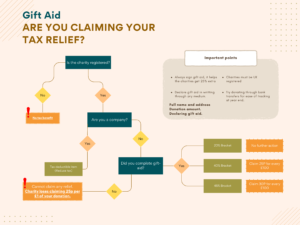Understanding the Tax Implications of Salary vs. Dividends for Business Owners
When it comes to remunerating themselves, business owners often face the dilemma of choosing between taking a salary or dividends. Each option has distinct tax implications, and understanding these can help in making an informed decision. This article delves into the nuances of both methods, highlighting the true tax costs involved.
Salary: The Traditional Route
- Tax Deductibility: One of the primary advantages of taking a salary is that it is a tax-deductible expense for the company. This means that the salary paid to the director reduces the company’s taxable profit, thereby lowering the corporation tax liability.
- Income Tax: The director’s salary is subject to income tax. For the 2024/25 tax year, the UK income tax rates are:
- Personal Allowance: £12,570 (0% tax)
- Basic Rate: 20% on income from £12,571 to £50,270
- Higher Rate: 40% on income from £50,271 to £125,140
- Additional Rate: 45% on income over £125,140
- National Insurance Contributions (NICs): Both the employee and employer must pay NICs on the salary. The rates for 2024/25 are:
- Employee NICs: 10% on earnings from £12,570 to £50,270, and 2% above £50,270
- Employer NICs: 13.8% on earnings above £9,100, with an Employment Allowance of £5,000 available to offset this cost.
Dividends: The Alternative Approach
- Corporation Tax: Dividends are paid from the company’s post-tax profits. This means that the company must first pay corporation tax on its profits before distributing dividends. The corporation tax rate for 2024/25 is 25%.
- Dividend Tax: Once dividends are distributed, they are subject to dividend tax at the shareholder’s personal tax rate. The rates for 2024/25 are:
- Dividend Allowance: £500 (0% tax)
- Basic Rate: 8.75% on dividends above the allowance up to £50,270
- Higher Rate: 33.75% on dividends above £50,270
- Additional Rate: 39.35% on dividends over £125,140
Comparing the Two Methods
To illustrate the tax implications, let’s consider a business owner drawing £100,000.
Scenario 1: Combination of Salary and Dividends
- Salary: £12,570
- Dividends: £87,430
- Corporation Tax on Dividends: £87,430 × 0.25 = £21,857.50
- Personal Income Tax on Dividends: (£37,700 × 0.0875) + (£48,730 × 0.3375) = £19,747.38
- Employee NICs: £0 (salary within Personal Allowance)
- Employer NICs: £0 (covered by Employment Allowance)
Total Tax Paid: £21,857.50 (CT) + £19,747.38 (Income Tax) = £41,604.88
Scenario 2: Salary Only
- Salary: £100,000
- Personal Income Tax: (£37,700 × 0.20) + (£49,730 × 0.40) = £27,432
- Employee NICs: (£37,700 × 0.10) + (£49,730 × 0.02) = £4,765.40
- Employer NICs: (£90,900 × 0.138) – £5,000 = £7,550.20
- Corporation Tax Savings: £100,000 × 0.25 = £25,000
Total Tax Paid: £27,432 (Income Tax) + £4,765.40 (Employee NICs) + £7,550.20 (Employer NICs) – £25,000 (CT Savings) = £14,747.60
Conclusion
From the calculations, it is evident that the total tax paid can vary significantly depending on the method chosen. While dividends might seem attractive due to lower personal tax rates, it is crucial to consider the corporation tax already paid on these dividends. For higher income levels, taking a salary can become more tax-efficient due to the corporation tax savings and the higher personal income tax rates on dividends.









